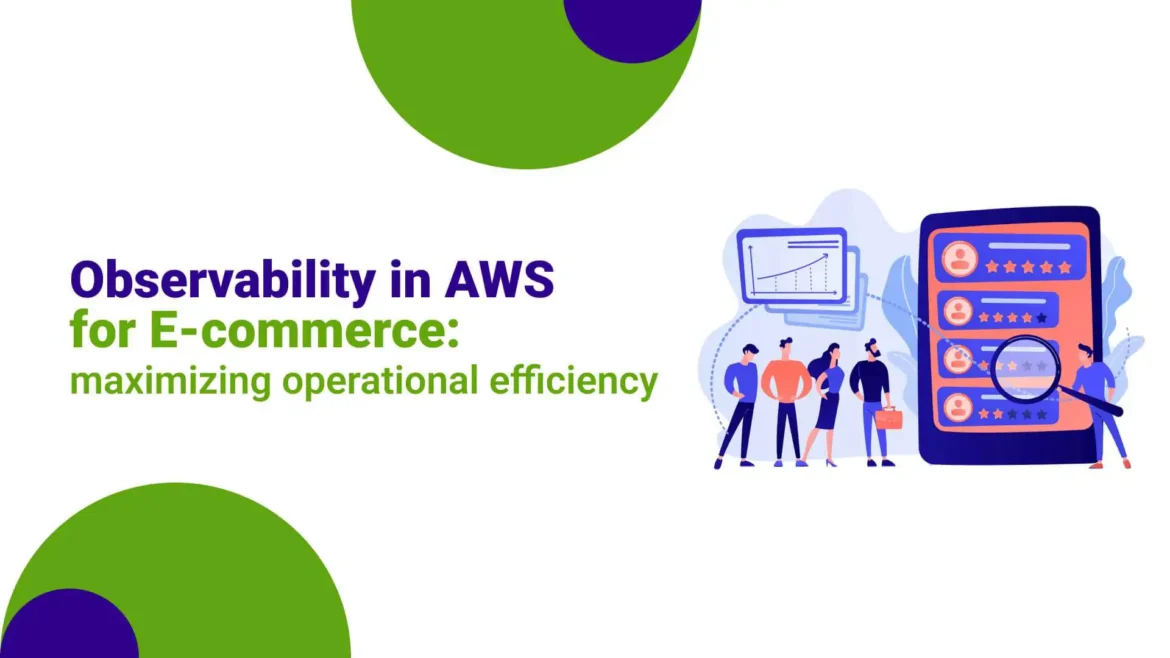Cloud systems are powerful, but they can also be complex. That’s where AWS observability comes in. Observability means being able to see what’s happening inside your cloud system. It helps you understand how everything is working and find problems before they become serious.
When you use AWS (Amazon Web Services), many things run at the same time—like servers, apps, and databases. If something goes wrong, it can be hard to know where the issue started. Observability tools help you track and monitor all these moving parts. This way, you can fix things quickly and keep everything running smoothly.
Observability is not just about looking at logs or charts. It’s about understanding the full picture—what happened, why it happened, and how to fix it. AWS provides special tools that give you this level of insight.
Whether you’re a beginner or an expert, observability makes your cloud experience easier and safer. With the right tools, you can improve how your system works, help users have a better experience, and keep your data and services protected.
What AWS Observability Means
In simple words, AWS observability means being able to watch and understand everything going on in your cloud environment. This includes tracking how fast your apps are, checking for errors, and seeing how your users interact with your systems.
Think of it like a dashboard in a car. Just like how your speedometer tells you how fast you’re going or your fuel gauge shows if you need gas, AWS observability tools show you the “health” of your cloud system.
There are three key parts to observability:
- Logs – Records of what happened and when.
- Metrics – Numbers that show performance like speed or memory usage.
- Traces – Maps that follow the journey of a request through the system.
Together, these give a clear picture of what’s working and what’s not. AWS brings all these parts into one place so you can spot problems, fix them fast, and make smart choices.
Why Observability Is Important in the Cloud
Cloud systems can grow big and move fast. If you don’t watch them closely, small problems can turn into big ones. Observability is like having a camera and sensor system that watches your cloud 24/7.
Let’s say your website is loading slowly. Without observability, you might not know why. With observability, you can find out if the problem is with your server, your database, or something else.
It also helps you prevent problems before they happen. If something starts to break, observability tools can send you alerts. You can fix the issue before your customers even notice.
For businesses, observability means fewer surprises, better performance, and happier users. That’s why more and more companies are using AWS observability to stay ahead.
Key Tools That Support AWS Observability
AWS offers several tools that help you watch and understand your systems. These tools work together to give you a full view of your cloud environment. Here are some of the most popular ones.
Amazon CloudWatch
Amazon CloudWatch is one of the most widely used AWS observability tools. It collects logs, metrics, and events from your applications and services.
CloudWatch shows you things like:
- How much memory your server is using
- If your app is having errors
- When something important happens
You can also set up alarms. These are alerts that tell you if something goes wrong. For example, you can set an alarm to tell you if CPU usage goes above 80%.
CloudWatch has dashboards too. These are easy-to-read screens that show all the important numbers and charts in one place. It’s a great tool to keep track of everything, especially if you’re just starting with AWS.
AWS X Ray
AWS X Ray helps you understand how your apps are working behind the scenes. It shows how a request moves through your system. This is called a trace.
Imagine a customer clicks a button on your app. That click might go through several services—like login, data lookup, and payment. X Ray shows you that full journey. If something is slow or broken, you’ll see where it happened.
X Ray is very useful for developers. It helps them fix bugs faster and make apps run better. You can also spot which part of your system needs improvement.
AWS CloudTrail
AWS CloudTrail keeps track of every action taken in your AWS account. It’s like a security camera for your cloud.
Whenever someone creates a server, deletes a file, or changes a setting, CloudTrail records it. This helps you know who did what and when.
CloudTrail is very useful for keeping your system safe and following company rules. If something goes wrong or looks suspicious, you can use CloudTrail to investigate.
Together, CloudWatch, X Ray, and CloudTrail give you a powerful way to watch and manage your AWS environment.
Benefits of Using AWS Observability in Daily Work
Using AWS observability in your daily work can make a big difference. It helps you solve problems faster, make better decisions, and keep everything running smoothly.
Finding Problems Before They Affect Users
One of the biggest benefits of observability is finding issues early. Instead of waiting for customers to complain, you can fix problems before they even notice.
For example, if your server is slowing down, CloudWatch can alert you. You can fix it before it crashes or causes delays.
This is great for customer experience. When your apps run smoothly, users stay happy. It also builds trust in your product or service.
Observability gives you control. It helps you respond quickly and avoid long downtimes.
Making Better Decisions With Data
Another great benefit is making smarter decisions. With tools like CloudWatch and X Ray, you get real data about how your system works.
This helps you:
- See which parts are slow
- Know when to upgrade or fix something
- Decide how to grow your system
You’re not guessing—you’re using facts. That means your decisions are stronger, and your system runs better.
Real Life Use Cases of AWS Observability
Let’s look at how real companies use AWS observability to make their systems stronger and more efficient.
Helping Developers Understand App Behavior
Developers often need to know how their apps behave in real time. With tools like AWS X Ray, they can see how each part of the app performs.
If a part of the app is slow, they can find it quickly. If there’s a bug, they can trace the issue and fix it fast.
This makes development faster and cleaner. It also helps teams work better together because they can all see the same data and results.
Improving System Performance and Uptime
Every business wants their systems to run fast and without interruption. AWS observability helps achieve this by tracking system health all the time.
For example, a company can use CloudWatch to keep track of server loads. If a server gets too busy, they can add another one automatically.
This keeps systems running smoothly and helps avoid downtime. The result? Happier users and fewer headaches for the tech team.
Getting Started With AWS Observability
You don’t need to be an expert to start using AWS observability. With a few simple steps, you can begin tracking your systems and improving performance.
Learning to Use the Right Tools
Start by exploring AWS CloudWatch. Set up basic monitoring for your apps or servers. You can watch CPU, memory, and other key metrics.
Then, try out AWS X Ray to trace how your app works. Even a simple app can benefit from this level of insight.
Lastly, turn on AWS CloudTrail to see a log of actions in your AWS account. It helps you understand what’s happening and who is making changes.
AWS also offers free tutorials and learning paths to guide you step by step.
Building Simple Dashboards and Alerts
Once you’re familiar with the tools, build a dashboard in CloudWatch. Pick the most important things to monitor—like error rates or response times.
Then set up alarms. These are alerts that notify you if something goes wrong. You can get emails, text messages, or even trigger automatic actions.
Start small, and grow as you learn. Soon, you’ll have a full observability setup that keeps your system healthy and easy to manage.
The Future of AWS Observability
Technology is always changing, and observability is becoming more important than ever.
How AI and Automation Will Improve Observability
In the future, AWS observability tools will use more artificial intelligence (AI). This means they will not only show you problems but also suggest solutions or fix them automatically.
AI can look at data trends and predict issues before they happen. It’s like having a smart assistant that watches your system all the time.
Automation will also grow. Instead of just sending alerts, observability tools will take action—like adding resources or restarting services.
Why Observability Skills Will Be Needed More
As more businesses move to the cloud, observability will be a must-have skill. Companies want people who can keep systems running well and fix problems quickly.
Learning AWS observability today puts you ahead. It gives you job-ready skills and makes you valuable to tech teams everywhere.
Conclusion
AWS observability is a smart way to monitor, manage, and improve cloud systems. It helps you see what’s going on, solve problems early, and keep everything working smoothly. With tools like CloudWatch, X Ray, and CloudTrail, you get a full picture of your system’s health. Whether you’re just starting or already in tech, learning AWS observability can open new doors. Start small, use the tools, and grow your skills. The more you know, the better your systems—and your future—will be.




